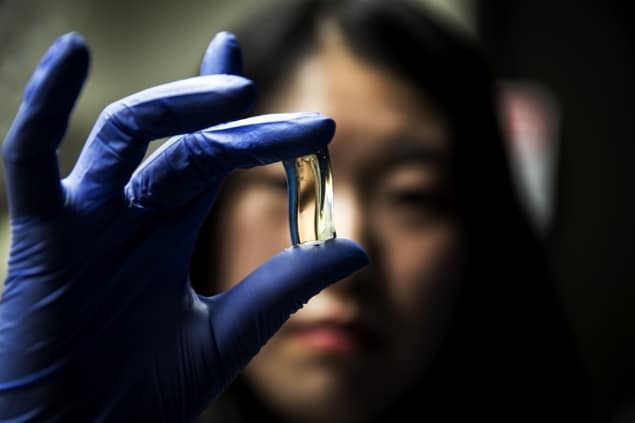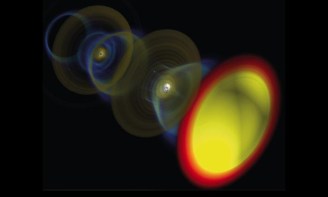
Magnetic nanoparticles with chiral distortions in their crystal lattice provide an unprecedented degree of control over circularly polarized light. The effect, which was demonstrated by the nanoparticles embedded in a transparent gel and exposed to a magnetic field, can be understood thanks to careful consideration of the magnetic field of the photons, in addition to the familiar electric field.
Where magnetism and chirality (a lack of mirror symmetry) overlap there are often intriguing discoveries. These two concepts are fundamental to the advancement of spintronics, chiral catalysis and magneto-optics. Much of the research in this field aims to enhance the interaction between electrons in matter and the (often ignored) magnetic field of a photon.
A recent and very successful example of such an attempt is the work from Nicholas Kotov and collaborators in the University of Michigan, USA, and the Federal University of São Carlos, Brazil. The researchers created a material comprised of magnetic nanoparticles (NPs) with a chiral or twisted crystal structure encased in a transparent gel. This chiromagnetic gel responds to circularly polarized light with a sensitivity 10 times greater than previously observed in similar non-magnetic composites.
Making and measuring the nanoparticles
Kotov and his team synthesized NPs around 5nm in size from cobalt oxide (Co3O4) in the presence of chiral molecules of cysteine. These come in L- or D- configurations depending on their handedness, where the L-type is the mirror image of the D-type. The cysteine ligands attach to the surface of the NPs, and create distortions in the crystal lattice of the NP depending on the handedness of the ligand itself. This induces chirality in the NPs that remains even after the ligands are removed. They then encased the NPs in a polyacrylamide gel to prevent movement.
The team tested a block of NPs encased in gel for a standard signature of chiromagnetic particles using circular dichroism, a technique that reveals the difference in absorption of left-handed and right-handed circularly polarized light. They found the circular dichroism measurements to be 10 times greater than that of other similar non-magnetic nanoparticles, even large enough to be detected by the naked eye when viewing the sample between crossed polarizers.
Testing the tunability
The theory suggested that applying and varying a magnetic field across the NP-embedded gel should allow the circular dichroism to be tuned. A particularly exciting thought, as previously in situ control of circular dichroism in chiral NPs had only been achieved by making irreversible chemical changes. Indeed, exposing the chiral NP gel to fields of around 1.4 T induced significant changes in the circular dichroism spectra in the UV region. The magnitude of this effect exceeds giant Zeeman splitting, which has only been observed at liquid helium temperatures. The strong polarization rotation observed when light passes through the chiromagnetic gel can be used in devices based on the Faraday effect, but with the advantage of common earth abundant materials.
This result highlights a new family of optical media with which to study complex light-matter interactions. The magnetic field of a photon is no longer ignored, but utilized and manipulated to our advantage.
Read more about this work in Science.



